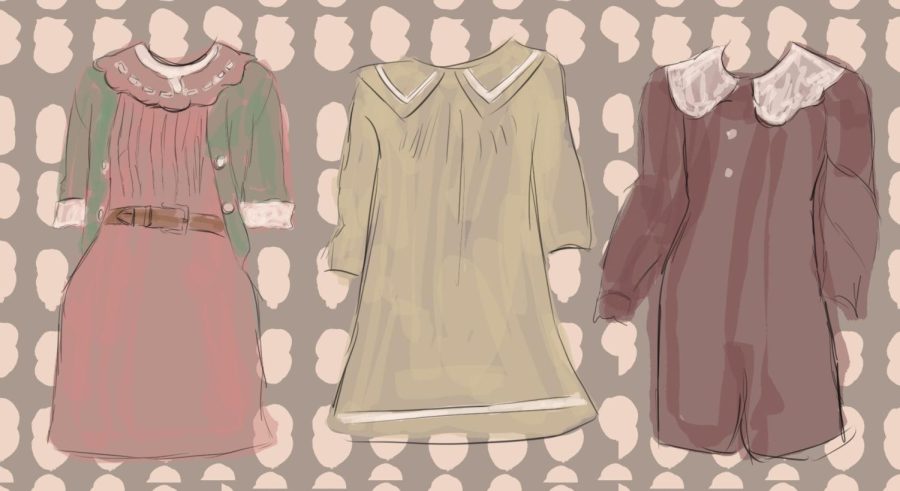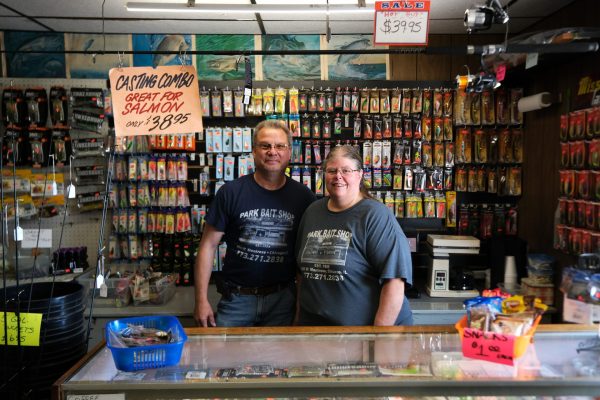The return of Twee fashion and its not so stylish implications
Credit: Alicia Goluszka
As with many recent fashion trends, TikTok has created the perfect environment for sharing new looks, creating unique statement pieces and most notably, resurrecting crazes from a bygone era.
The app’s latest fad, Twee, has caused many to return to the early 2010s, where “hipsters” equated to regular consumers of Starbucks coffee and Tumblr was everybody’s favorite app.
Twee, as defined by Merriam-Webster, refers to anything “affectedly or excessively dainty, delicate, cute or quaint.” Staple Twee pieces include ballet flats, printed tights, skater skirts and cardigans.
Despite this trend appearing relatively harmless, its history whispers of a darker tale.
During its prime from 2012 to 2014, Twee fashioned itself beyond mere clothing and accessories, morphing into an aesthetic grounded in dangerous body standards for young women and the idolization of evidently unhealthy characters such as Cassie Ainsworth and Effy Stonem from the popular UK television series “Skins.”
Through the platform of Tumblr, Twee’s culture transformed into one radiating with negativity and harmful notions, such as public promotion of hazardous behaviors and the glorification and encouragement of eating disorders and self-harm practices.
However, Twee’s revival does not have to mirror its formative years.
DePaul junior Sara Huth, founder and editor-in-chief of DePaul’s fashion zine “Crescent Magazine,” describes herself as unsure regarding the trend’s comeback.
“The trend’s influence depends on how TikTok’s algorithm handles it,” Huth said.
In recent months, the app’s discovery method — the “for you” page, — has been under fire for purposefully excluding posts from users who do not meet conventional beauty standards, according to The Guardian.
“As with Y2K’s revival, early 2000s fashion favors thin white women. I’m not certain how this trend will be any different.” Huth said.
While TikTok’s unprecedented cycling rate through styles may create a false image of a rapidly expanding and ever-accepting industry, Huth further explains that’s not the case.
“Whiteness is hard to change, and I believe that at its core, TikTok’s algorithm is merely relaying what we already know, that it’s fine when a white woman poses on social media in lingerie, but the moment a Black woman does, the image gets reported in seconds,” she said.
Yet not all hope is lost; while TikTok’s algorithm may be skewed, with the app’s over 1 billion active users, Huth still believes that Twee’s revival will be more inclusive to all body types and people of color.
“Since the trend reaches so many people, it will lead to a wider demographic being able to participate and be seen rather than the previous notion of only thin white girls embodying Twee,” Huth said.
One of Twee’s most recognizable factors was the way it equated thinness with beauty. Sophomore Lauren Lantz believes that TikTok will only further amplify this harmful standard.
“The Twee that I notice today takes Tumblr’s culture of glorifying mental illness and disguises it with a delicate, almost dainty cover-up,” Lantz said.
Like many other viewers, Lantz enjoys the physical fashion of Twee, but fears the followings that amass behind such widespread trends.
“I find Twee to be a charming style, but have directly experienced the unpleasant environment on both Tumblr and TikTok that accompanies fads so centric to body size and other societal components, such as diet culture and the male gaze, which hold an incredibly detrimental impact on supposedly lighthearted videos,” Lantz said.
TikTok’s influence spreads vastly beyond mere fashion crazes; the app is known for highlighting harmful behaviors such as ‘what I eat in a day,’ where participants record and describe every article of food they consume.
Regrettably, this trend has morphed into many posting worrisome meal portions and obvious bodychecking, further spreading the eating disorder epidemic amongst young adults. According to the National Association of Anorexia Nervosa and Associated Disorders, 35-57% of adolescent girls engage in crash dieting, fasting, self-induced vomiting, diet pills, or laxatives throughout their formative years. With constant reaffirmation of unachievable body standards and tutorials regarding unhealthy means of weight loss, it is evident that TikTok already possesses its own problems surrounding eating disorders.
Fortunately, there are ways to prevent Twee from expanding beyond its innocent intentions.
“I believe that with monitoring and proper education, we can balance the awareness of harm done by diet culture, while celebrating styles and the return of old trends,” Lantz said.
Sophomore Ashley Cole shares a similarly optimistic perspective.
“I think this wave of Twee can be separated from its predecessor,” she said. “It’s important to acknowledge the harm caused during the initial trend, such as body shaming and blatant racism. If we can recognize how it went wrong and why, then we can focus on the fashion instead.”
While the trend remains in its early stages of revival, the initial worry regarding its effect remains reasonable considering its unfavorable influence on Tumblr. In the end, Twee’s outcome falls to both content creators and the app’s algorithm to dictate the effects this fad will have.
The third issue of “Crescent Magazine” will be available through their Linktree later this month.






